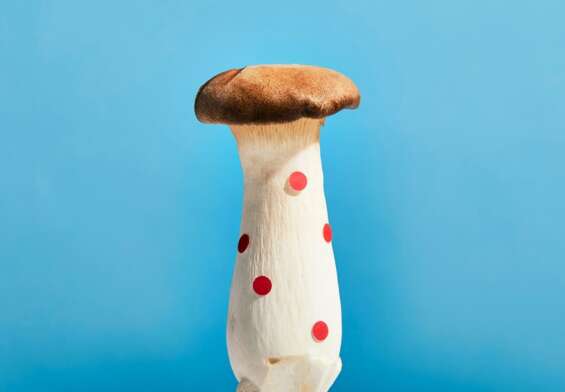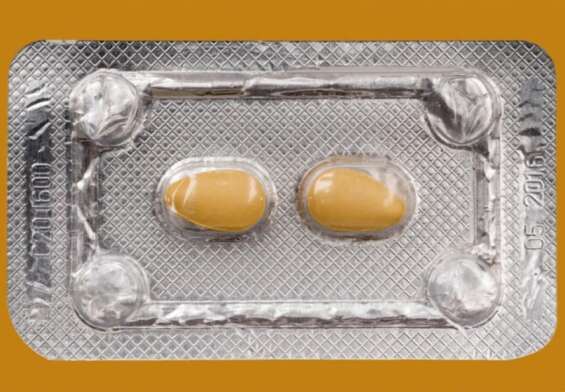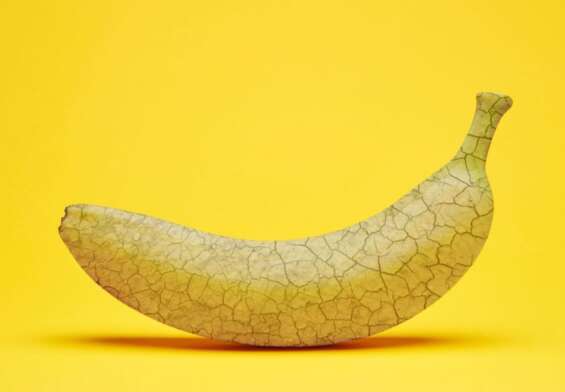
The Ultimate Guide to Getting Rid of Puffy Nipples in Men!
Hey there, FitGAG readers! Are you tired of feeling self-conscious about your puffy nipples? Well, you’re not alone! Puffy nipples in men can be a source of embarrassment and frustration, but fear not! In this article, we’re going to dive into all the non-surgical and surgical methods to get rid of those pesky puffy nipples. From exercise and diet to liposuction and gland excision, we’ve got you covered!
So, whether you’re hitting the gym or considering surgery, we’ll walk you through the risks, benefits, and expected results. But before we get into it, let’s take a closer look at what puffy nipples are and what causes them.
Non-Surgical Methods To Get Rid Of Puffy Nipples
While it’s not a serious health concern, having puffy nipples can be a source of embarrassment and lower self-esteem. Fortunately, there are various non-surgical methods to get rid of them.
Exercise
If you’re looking for a non-surgical way to get rid of puffy nipples, exercise is a great place to start. Here are two types of exercises that can help reduce puffy nipples:
Cardiovascular Exercises To Reduce Overall Body Fat
Cardiovascular exercise is an excellent way to burn calories and reduce overall body fat, including in the chest area. By reducing overall body fat, you can reduce the size of your puffy nipples.
Some great cardiovascular exercises to try include:
- Running or jogging
- Cycling
- Swimming
- Rowing
- Dancing
It’s recommended that you aim for at least 150 minutes of moderate-intensity cardiovascular exercise per week to achieve significant results. Additionally, you should combine this with resistance training to tone and strengthen your muscles.
Chest Exercises To Tone And Strengthen Chest Muscles
Chest exercises can help tone and strengthen the muscles in your chest, which can help reduce the appearance of puffy nipples. By building up the chest muscles, you can create a more defined and sculpted chest, which can make puffy nipples less noticeable.
Some great chest exercises to try include:
- Push-ups
- Bench presses
- Chest flyes
- Dumbbell pullovers
- Cable crossovers
It’s important to note that chest exercises won’t directly reduce breast tissue, but they can help create a more toned and defined chest. For best results, it’s recommended that you incorporate a variety of chest exercises into your workout routine and perform them regularly.
In addition to these exercises, it’s important to maintain a healthy and active lifestyle to reduce the appearance of puffy nipples. This includes getting enough sleep, managing stress, and staying hydrated.
If you’re new to exercise, it’s important to start slowly and gradually increase the intensity and duration of your workouts. Additionally, it’s always a good idea to consult with a medical professional before starting a new exercise program, particularly if you have any underlying health conditions.
Diet
When it comes to getting rid of puffy nipples, a healthy diet is essential. Here are three key dietary tips to consider:
Reduction In Calorie Intake To Create A Calorie Deficit
Reducing your overall calorie intake is key to losing body fat, including in the chest area. This can be achieved by tracking your daily caloric intake and aiming for a calorie deficit of 500-1000 calories per day. This can be done by making small changes to your diet, such as reducing portion sizes or choosing lower-calorie foods.
One way to achieve a calorie deficit is by practicing intermittent fasting, which involves alternating between periods of fasting and eating. This can help reduce overall calorie intake while also improving insulin sensitivity and reducing inflammation in the body.
Increased Protein Intake To Support Muscle Growth
Increasing your protein intake is important for building and maintaining muscle mass. This can help create a more defined chest and reduce the appearance of puffy nipples.
Some good sources of protein include lean meats, fish, eggs, beans, and legumes. Aim for a protein intake of at least 1 gram per pound of body weight per day to support muscle growth.
Reduction In Processed And High-Sugar Foods
Processed and high-sugar foods can contribute to weight gain and inflammation in the body. This can make it harder to reduce puffy nipples and achieve a more toned chest.
Instead, focus on consuming whole, nutrient-dense foods such as fruits, vegetables, whole grains, and lean proteins. These foods can provide your body with the nutrients it needs to support overall health and reduce inflammation.
It’s important to note that while dietary changes can be effective in reducing puffy nipples, they may not be enough for everyone. It’s important to consult with a medical professional to determine the best course of action for your individual needs.
Herbs
If you’re looking for a natural way to help reduce puffy nipples, herbs may be a great option to consider. While there are many herbs that have been used traditionally to treat various conditions, there are a few specific ones that have been shown to be effective in reducing puffy nipples in men.
Guggul
One of the most popular herbs used for this purpose is guggul. This herb has been used in Ayurvedic medicine for centuries and has been shown to help reduce inflammation and promote weight loss. It works by increasing the body’s metabolic rate, which helps to burn fat and reduce overall body fat, including fat in the chest area.
Green Tea
Another herb that has been shown to be effective in reducing puffy nipples is green tea. Green tea contains powerful antioxidants called catechins, which have been shown to help reduce inflammation and promote weight loss. It also helps to increase the body’s metabolic rate, making it easier to burn fat.
Turmeric
Turmeric is another herb that has been traditionally used for medicinal purposes. It contains a compound called curcumin, which has anti-inflammatory properties and has been shown to help reduce inflammation in the body. This can be particularly helpful in reducing inflammation in the chest area, which can lead to puffy nipples.
While herbs can be a great natural way to help reduce puffy nipples, it’s important to consult with a healthcare professional before using any herbs. They can provide guidance on the proper dosage and ensure that there are no interactions with any other medications or conditions.
In addition to using herbs, it’s important to maintain a healthy lifestyle to help reduce puffy nipples. This includes eating a healthy diet that is low in processed and high-sugar foods and high in protein, as well as engaging in regular exercise to help burn fat and tone the chest muscles.
Surgical Methods To Get Rid Of Puffy Nipples
Puffy nipples in men can be a source of discomfort and self-consciousness, affecting their self-esteem and confidence. Although non-surgical methods such as exercise, diet, and herbs can help to reduce puffy nipples, they may not be effective in severe cases. In such instances, surgical methods may be the most viable option. There are three main surgical procedures to remove puffy nipples:
Liposuction
For men who have tried non-surgical methods to get rid of their puffy nipples with little success, liposuction may be a viable option. Liposuction is a cosmetic surgery procedure that removes excess fat from the body, including the chest area where puffy nipples are common. This procedure can be performed under local or general anesthesia, depending on the amount of fat to be removed.
During the procedure, a small incision is made in the chest area, and a thin tube called a cannula is inserted. The cannula is used to suction out the excess fat from the chest, sculpting a more masculine contour. This technique is particularly effective for men who have a significant amount of excess fat in the chest area that is resistant to diet and exercise.
Liposuction is generally a safe procedure, but like all surgeries, it carries some risks. Possible complications include bleeding, infection, and scarring. However, with proper care and attention, these risks can be minimized. Recovery time for liposuction is generally about two weeks, and post-operative care instructions will be provided by the surgeon.
Expected results from liposuction are usually positive, with high satisfaction rates reported among patients. Men who undergo liposuction for puffy nipples typically see a significant improvement in their chest contour, with a flatter, more defined chest.
It is important to note that liposuction is not a substitute for a healthy lifestyle. Maintaining a healthy diet and regular exercise routine is crucial to maintain the results of the procedure. Additionally, it is important to consult a medical professional to determine if liposuction is the best course of action for your individual situation.
Gland Excision
Gland excision is a surgical method used to remove excess glandular tissue from the chest area of men suffering from puffy nipples. This is a common condition in men, caused by hormonal imbalances or excess fat accumulation in the chest area, resulting in the appearance of swollen nipples.
During gland excision surgery, a small incision is made around the nipple, and the excess glandular tissue is removed. This procedure is typically performed under local anesthesia, and patients can usually return home the same day. The recovery period for gland excision is relatively short, with most patients able to resume normal activities within a few days.
Gland excision is a highly effective method for reducing the appearance of puffy nipples. Patients who undergo this surgery typically experience a significant improvement in the appearance of their chest, with a more defined and masculine contour. In addition, gland excision is a permanent solution, as the glandular tissue is permanently removed.
However, like any surgical procedure, gland excision does carry some risks. Potential complications include bleeding, infection, scarring, and changes in nipple sensation. It is important for patients to discuss these risks with their healthcare provider and to carefully follow all post-operative care instructions.
Combination Of Liposuction And Gland Excision
For some men, a combination of excess glandular tissue and fat in the chest area can lead to puffy nipples. In these cases, a combination of liposuction and gland excision may be recommended to achieve the best results.
During this surgical procedure, the surgeon will first use liposuction to remove excess fat from the chest area. This is typically done using a small tube called a cannula, which is inserted through small incisions in the skin. The cannula is then used to suction out the excess fat, which can help to reduce the size of the breast tissue.
After the liposuction portion of the procedure is complete, the surgeon will then perform gland excision to remove any remaining glandular tissue. This is typically done through a small incision around the areola. The surgeon will carefully remove the excess glandular tissue while preserving the surrounding tissue and nipple.
Combining liposuction and gland excision can help to achieve a more contoured and natural-looking chest. This procedure is often recommended for men who have a combination of excess fat and glandular tissue, as it can be more effective than either procedure alone.
As with any surgical procedure, there are risks associated with a combination of liposuction and gland excision. These can include bleeding, infection, scarring, and changes in sensation around the nipple area. It is important to carefully consider the potential risks and benefits of this procedure and to discuss any concerns with a qualified healthcare professional.
Recovery from a combination of liposuction and gland excision typically takes several weeks. Patients will be advised to wear a compression garment to help reduce swelling and promote healing. They may also be prescribed pain medication and instructed to avoid strenuous activity for several weeks.
Risks And Benefits Of Surgery
When considering surgical methods for getting rid of puffy nipples, it is important to understand both the potential risks and benefits of the procedure. While surgery can be highly effective in achieving a more defined chest, it is still a medical procedure that carries some risks and requires careful consideration.
Potential Complications
As with any surgical procedure, there is a risk of complications during and after surgery. Some of the potential complications of liposuction and gland excision include bleeding, infection, and scarring. It is important to choose a qualified and experienced surgeon who can minimize these risks and provide a safe and successful procedure.
Recovery Time And Post-Operative Care
After the surgery, there will be a recovery period during which the patient will need to take time off work and avoid strenuous physical activity. The recovery time can vary depending on the extent of the procedure and the individual patient’s healing process. In general, patients can expect some bruising, swelling, and discomfort for several weeks following the surgery.
During the recovery period, it is important to follow the surgeon’s post-operative care instructions carefully. This may include wearing a compression garment, taking medication for pain management, and avoiding certain activities to ensure proper healing.
Expected Results And Satisfaction Rates
One of the most significant benefits of surgery for puffy nipples is the potential for long-lasting and dramatic results. Patients can expect a flatter, more contoured chest with minimal scarring.
Studies have shown high satisfaction rates among patients who have undergone surgery for puffy nipples. A study published in the Aesthetic Surgery Journal found that 96% of patients were satisfied with the results of liposuction for gynecomastia.
Conclusion
There you have it, folks! We’ve covered all the ways to get rid of puffy nipples, from exercise and diet to liposuction and gland excision. Remember, there’s no one-size-fits-all approach, and it’s essential to consult a medical professional to determine the best course of action for you.
Don’t let puffy nipples hold you back from feeling confident and comfortable in your own skin. With a little effort and the right guidance, you can say goodbye to puffy nipples for good!
So, whether you’re hitting the gym or considering surgery, take action and reclaim your chest health today! And for more informative and inspiring articles on all things fitness, stay tuned to FitGAG!











